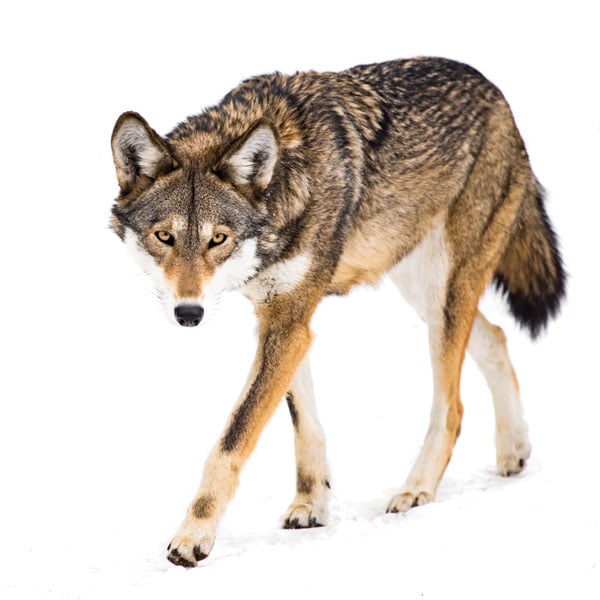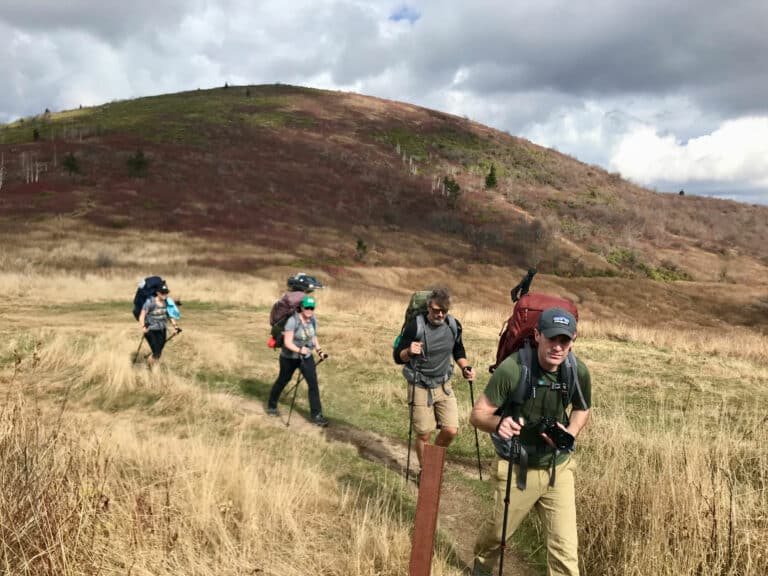Red wolves were once an endangered species success story, rebounding from the brink of extinction to a thriving population of over 200. Today, only 45 red wolves remain in the wild—and many hunters, along with the North Carolina Wildlife Resources Commission would like to eliminate them all.
Classified as endangered in 1973 and hunted to the brink of extinction, the U.S. Fish and Wildlife Service rounded up about 20 red wolves to be bred in captivity in 1980. They were released in eastern North Carolina and thrived for several decades until hunters, landowners, and the hunting-focused North Carolina Wildlife Resources Commission began taking aim at the imperiled species.
They have pressured the U.S. Fish and Wildlife Service—the agency in charge of managing endangered species—to significantly scale back recovery efforts for the red wolf. They have proposed shrinking the animal’s wild territory by nearly 90 percent and sending most of the population to zoos. The Fish and Wildlife Service argues that the captive, zoo-based population of red wolves is facing extinction, and thus resources should be focused on captive wolves at the expense of wild ones.
But Christian Hunt, the Southeastern Program Associate for Defenders of Wildlife, thinks that’s a false choice, because this doesn’t have to be a zero-sum game. And he says it’s special interests, not the health of the red wolf as a species, that’s driving the FWS proposal. “In recent years, the red wolf recovery program has been allowed to implode,” he says. The agency “has been derailed time and time again by a small but loud contingent of local, anti-government landowners who link the wolves and nearby wildlife refuges amount to government overreach.”
Over 80 percent of North Carolinians support protecting the red wolf in the wild, according to a statewide poll last year.
What’s more, Hunt says, the wolves have proven that they are able to survive in the wild if the FWS would merely take steps required under the Endangered Species Act to protect them. These include things like checking dens for new litters, fostering pups to add genetic diversity to the wild population, and collaring to provide crucial data on movement. Due to pressure from the state and a few vocal landowners, the agency has been doing none of this.
Indeed, the Fish and Wildlife Service itself is “the greatest threat to the red wolf,” says Sierra Weaver, an attorney for the Southern Environmental Law Center. “Even though the agency once successfully brought the species back from the brink of extinction by actively working to build the population, the Fish and Wildlife Service has now walked away from most beneficial conservation measures it was taking for the wolf.” Weaver also says the Fish and Wildlife Service is “misrepresenting the best available science” to justify its position, in particular a population viability analysis conducted in 2016 that clearly found that the wild red wolf population can be saved.
Southern Environmental Law Center is currently representing the Red Wolf Coalition, Defenders of Wildlife, and the Animal Welfare Institute in a legal challenge of the Fish and Wildlife Service’s attempt to allow “dramatically increased” lethal and non-lethal removal of wolves from private lands. “The agency is required to implement rules that provide for the conservation and recovery of the species, yet that is not occurring,” she says. “It’s too soon to say whether there will be any future challenges, but the service’s current proposal to shrink the red wolf recovery area makes that seem likely.”
Others take a different view. For example, in comments earlier this year to the FWS, the North Carolina Wildlife Resources Commission, which essentially lobbied to remove the red wolf from the endangered species list, claims—against the weight of the evidence and suspiciously in line with the interests of anti-government and private property advocates—that the best way to protect the remaining animals is to remove them from the wild and place them in a captive breeding program.
For its part, the Fish and Wildlife Service claims it’s committed to “recovering” the red wolf in the wild, but that more animals are needed in the captive population to boost genetic diversity and support the wild population. The agency plans to take several steps this year to accomplish that, including completing a five-year species status review to guide the recovery plan, determining potential new sites for experimental wild populations beyond the existing one in Eastern North Carolina, and increasing the captive population.
While all of this might sound good on paper, the FWS clearly isn’t committed to the wild red wolf population in practice and even questions whether it should be listed as an endangered species. That worries wildlife advocates like Red Wolf Coalition Executive Director Kim Wheeler, who urged animal lovers not to give up the fight. “The red wolf needs concerned citizens to let their representatives know that the red wolf is important and that they want to see the program continue with a wild and captive program,” she says, adding that there has been “overwhelming support” for continuing both programs. Over 80 percent of North Carolinians support protecting the red wolf in the wild, according to a statewide poll last year. “It is going to take a lot of hard work. But nothing worth fighting for is ever easy.”








